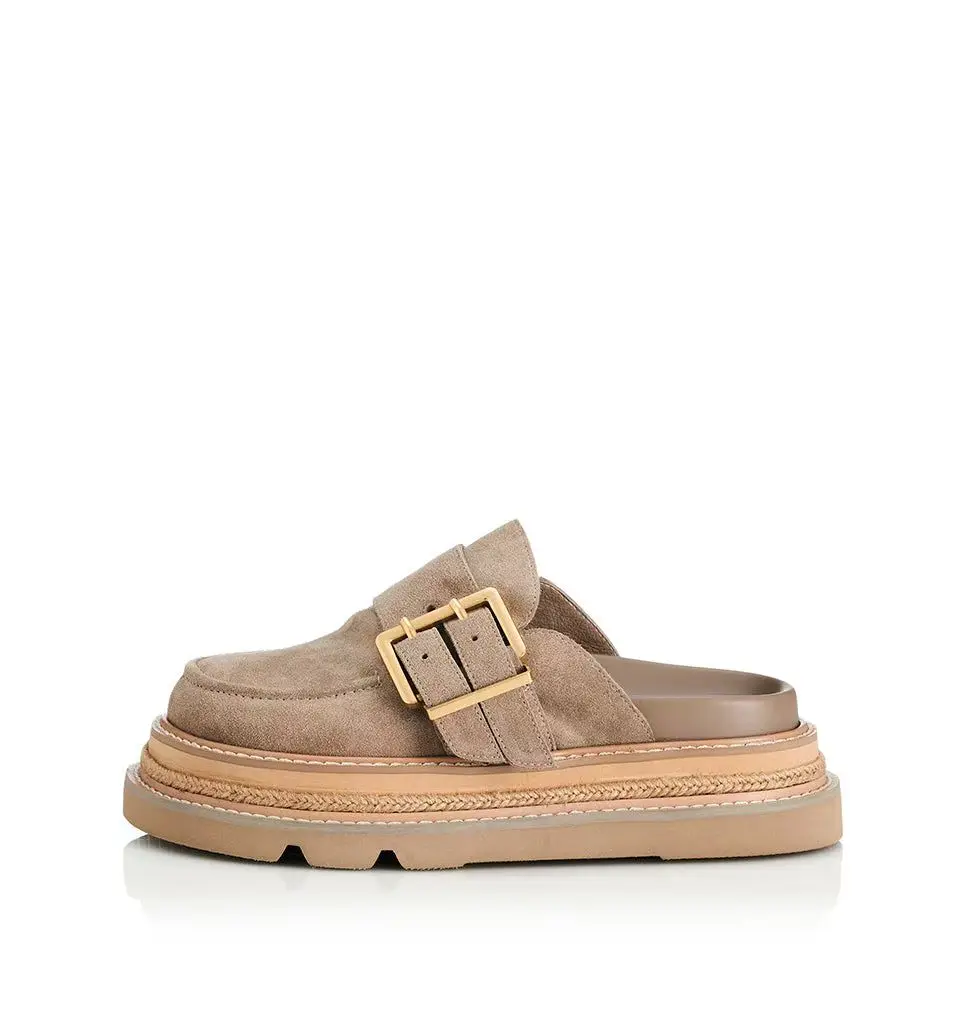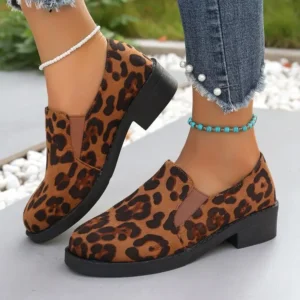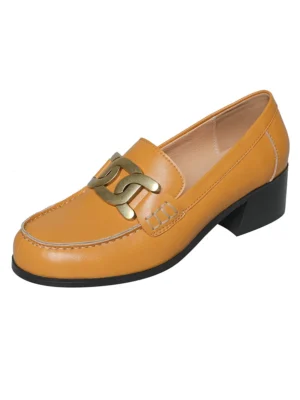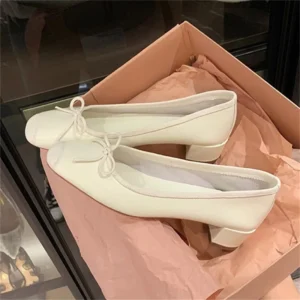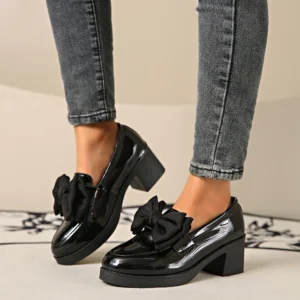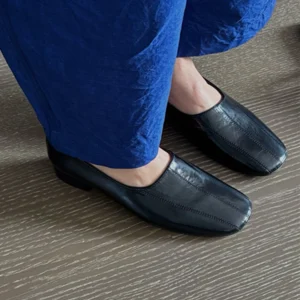Leather heeled loafers represent the perfect marriage of sophistication and comfort in the world of footwear. These versatile classics have gracefully evolved from purely practical shoes to beloved fashion staples that complement virtually any wardrobe. Their unique charm lies in their ability to bridge the gap between casual ease and professional polish—making them an invaluable addition to any collection.
Whether you’re new to leather heeled loafers or looking to maximize your existing pair, understanding the nuances of fit, styling, and maintenance can dramatically enhance both your comfort and the longevity of these investment pieces. From selecting the perfect fit to mastering various styling approaches for different occasions, this comprehensive guide will equip you with everything you need to know.
Wearing professional office loafer outfits with confidence requires more than just slipping on stylish shoes—it demands attention to detail and knowledge that transforms an ordinary footwear choice into a statement of personal style and practical wisdom.
I. Finding Your Perfect Fit: The Foundation of Comfort
The cornerstone of a positive experience with leather heeled loafers begins with finding the perfect fit. No amount of styling can compensate for uncomfortable shoes, making this perhaps the most crucial consideration of all.
Ideal leather loafers should feel snug but never constrictive. Your toes need adequate space—typically about a thumb’s width from the end of the shoe—while your heel should sit securely with minimal slippage. When trying on loafers, remember that your feet naturally swell throughout the day, making afternoon shopping trips more representative of how the shoes will typically fit.
Heel height variations significantly impact comfort levels. Consider these key points:
- Block heels provide greater stability and distribute weight more evenly
- Slimmer heels offer elegance but may require more balance
- Mid-height options (1.5-2 inches) typically offer the best balance of comfort and style
- Your walking style and foot shape may make certain heel styles more comfortable than others
One of the greatest advantages of quality leather loafers is their adaptability—premium leather gradually molds to your unique foot shape, creating a custom-like fit over time. This natural process results in footwear that becomes increasingly comfortable with regular wear.
Knowing how to wear loafers to the office starts with proper fit, as ill-fitting shoes can lead to persistent issues like blisters, bunions, and general foot fatigue that undermine even the most stylish outfit. Browse our collection of women’s leather heeled loafers to find options crafted with both style and anatomical considerations in mind.
II. The Art of Breaking In Your Leather Heeled Loafers
Even perfectly sized leather loafers require a thoughtful break-in period. This essential phase allows the natural material to soften and conform to your foot’s unique contours, ultimately resulting in footwear that feels custom-made.
Begin with brief indoor wearing sessions of 15-30 minutes to initiate the breaking-in process without risking discomfort or blisters. This controlled approach allows you to test the shoes in a safe environment while gradually introducing stress points to the leather.
Effective break-in strategies include:
- Wearing thicker socks during initial break-in sessions to stretch the leather gently
- Applying leather conditioner to areas that feel particularly stiff
- Using a hairdryer on low heat to warm tight spots before wearing (with extreme caution)
- Inserting shoe stretchers overnight for particularly stubborn areas
What to avoid during break-in:
– Forceful stretching methods that can damage leather structure
– Wearing new loafers for extended periods immediately
– Exposing fresh leather to harsh weather conditions
Most quality leather heeled loafers require approximately 3-7 wears to begin feeling truly comfortable, though complete breaking-in might take 2-3 weeks of regular wear. This timeline varies based on leather thickness and construction methods.
Block heel loafers often require specific break-in techniques due to their structured design and weight distribution. The sturdier construction typically found in block heels means the breaking-in period might focus more on softening the upper leather rather than adapting to heel stability.
III. Solving Common Comfort Issues
Even well-fitted leather loafers can present occasional comfort challenges. Addressing these issues proactively ensures your footwear remains a pleasure to wear throughout the day.
For friction points causing rubbing or pinching:
– Apply moleskin or specialized blister bandages to affected areas of your foot
– Use silicone heel grips to prevent back-of-heel friction
– Consider leather stretching spray for targeted relief (test on an inconspicuous area first)
– Place band-aids on potential problem areas before discomfort begins
Enhancing overall comfort can be achieved through strategic insole selection:
– Three-quarter length insoles provide cushioning without affecting toe fit
– Arch support inserts help distribute weight more evenly
– Memory foam options offer personalized pressure relief
– Gel inserts target specific high-pressure areas
Heel slippage represents a common issue that can be resolved through:
– Adhesive heel grips that add friction between your foot and the shoe
– Tongue pads to adjust fit and push the foot slightly backward
– Strategic padding placement to customize interior volume
When persistent comfort issues arise despite these interventions, professional shoe stretching services can provide precise adjustments impossible to achieve at home. A skilled cobbler can target specific pressure points without compromising the shoe’s structure.
Understanding why choose wedge heel loafers can be beneficial for those seeking maximum comfort, as wedge designs distribute weight more evenly across the foot, reducing pressure on the ball of the foot and heels.
IV. Styling for Professional Settings
Leather heeled loafers excel in professional environments, where they bring a perfect balance of comfort and polished appearance to workplace attire. Their structured silhouette and refined details communicate attention to detail while providing practical comfort for long workdays.
For corporate and formal office settings:
– Pair black or dark brown leather loafers with tailored trousers and a crisp button-down shirt
– Complement pencil skirts with pointed-toe loafer styles for a sophisticated silhouette
– Add visual interest to neutral-colored suits with burgundy or navy loafers
– Match leather texture and color with your belt or bag for a cohesive appearance
In business casual environments:
– Style loafers with ankle-length trousers and a tucked-in blouse
– Create a polished yet approachable look with a sheath dress and structured loafers
– Balance wide-leg pants with heeled loafers for proportion and professionalism
Color selection proves particularly important in professional settings. While black offers maximum versatility, rich brown, burgundy, and navy options provide subtle personality while maintaining workplace appropriateness. The heel height should generally remain conservative (1-2.5 inches) for professional settings, with block heels offering stability for all-day wear.
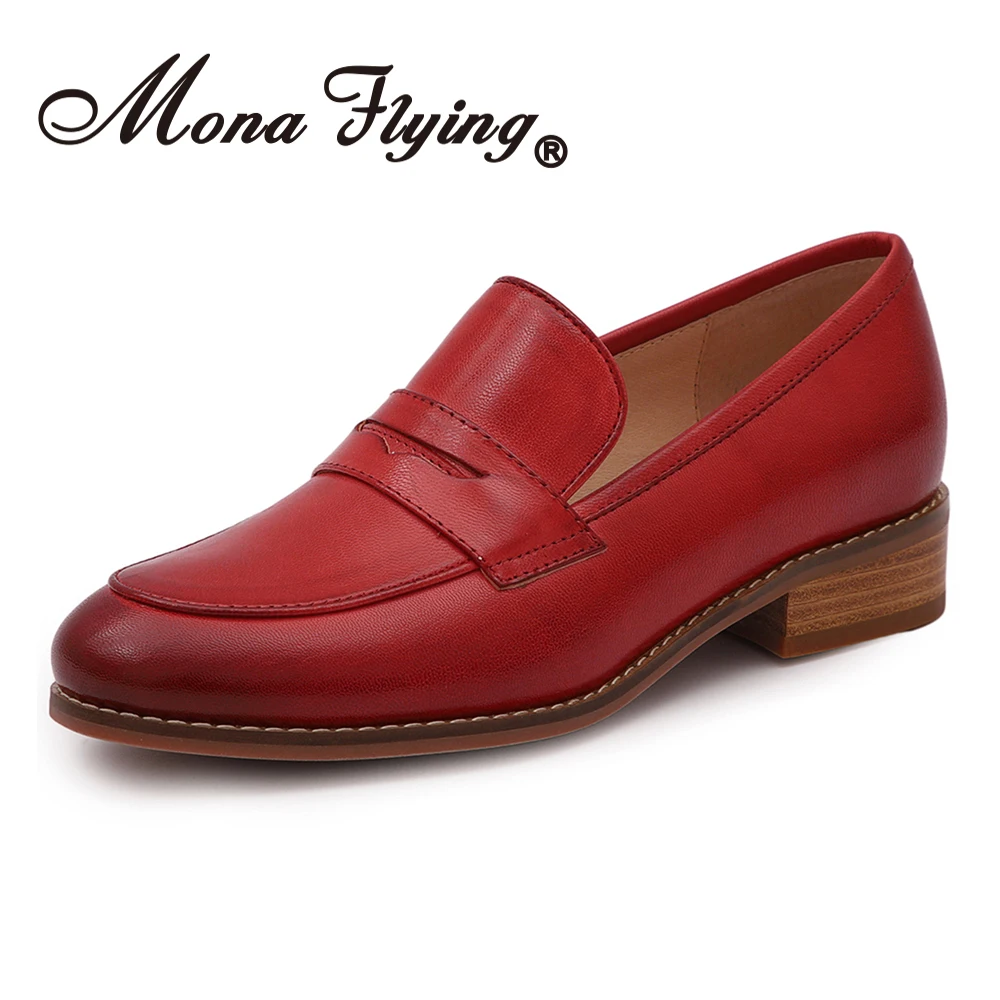
Creating effective business casual loafer outfits allows you to showcase personal style while maintaining professional boundaries. Our collection of women’s black heeled loafers offers timeless options designed specifically for workplace versatility.
V. Casual and Weekend Styling Approaches
Leather heeled loafers transition beautifully from workplace environments to relaxed weekend settings, offering elevated casual style with the comfort necessary for leisure activities.
Perfect denim pairings showcase the versatility of these shoes:
– Cropped jeans with a small cuff highlight the loafer’s silhouette while creating a casual yet intentional look
– Straight-leg styles balance the structured nature of loafers for effortless weekend style
– Wide-leg pants create dramatic proportions that make heeled loafers a grounding element
For spring and summer, pair leather loafers with:
– Casual cotton dresses for an elevated daytime look
– Linen shorts and a structured top for sophisticated warm-weather style
– Light-wash denim and a simple t-shirt for effortless weekend appeal
Fall and winter casual styling includes:
– Chunky sweaters with straight-leg jeans and loafers
– Casual shirt dresses with tights and loafers
– Corduroy pants and light knitwear complemented by rich leather loafers
Accessories that enhance casual loafer looks include simple leather totes, minimal jewelry, and casual scarves that tie the outfit together without overwhelming the refined footwear choice. The beauty of women’s low heel loafers in casual settings lies in their ability to elevate everyday attire without sacrificing comfort or appearing overly formal.
Women's Comfortable Flat Loafers, Women's Leopard Print Loafers, Women's Low Heel Loafers
$82.50 Select options This product has multiple variants. The options may be chosen on the product pageWomen's Block Heel Loafers, Women's Heeled Penny Loafers, Women's Monk Strap Loafers
$194.04 Select options This product has multiple variants. The options may be chosen on the product pageWomen's Block Heel Loafers, Women's Square Heel Loafers, Women's Square Toe Flat Loafers
Price range: $73.61 through $86.41 Select options This product has multiple variants. The options may be chosen on the product pageWomen's Black Heeled Loafers, Women's Black Platform Loafers, Women's Block Heel Loafers, Women's Chunky Heel Loafers
$72.58 Select options This product has multiple variants. The options may be chosen on the product pageWomen's Block Heel Loafers, Women's Leather Heeled Loafers, Women's Square Toe Flat Loafers
$109.84 Select options This product has multiple variants. The options may be chosen on the product pageWomen's Block Heel Loafers, Women's Leather Flat Loafers, Women's Leather Penny Loafers
$295.19 Select options This product has multiple variants. The options may be chosen on the product page
VI. Evening and Special Occasion Ensembles
Leather heeled loafers offer a refreshing alternative to traditional evening footwear, providing distinctive style and superior comfort for special occasions when you’ll be on your feet for extended periods.
The key to elevating loafers for evening wear lies in selecting styles with refined details:
– Rich leather textures like patent or polished calfskin create formal appeal
– Embellished options featuring hardware, tassels, or subtle embroidery add visual interest
– Darker colors (deep burgundy, navy, black) naturally lend themselves to evening settings
Create sophisticated evening looks by pairing elevated loafers with:
– A silk slip dress and structured blazer for cocktail events
– Tailored cigarette pants and a statement top for dinner occasions
– A midi skirt with a fitted sweater for gallery openings or cultural events
The heel height becomes particularly important for evening wear—opt for slightly higher options (2-3 inches) that create elongated lines without sacrificing the distinctive loafer silhouette. Additionally, paying special attention to shine and polish ensures your loafers meet the refined standards of evening attire.
Learning to wear high heel loafers for a night out allows you to combine comfort with sophistication, ensuring you can focus on enjoying the event rather than counting the minutes until you can remove uncomfortable shoes.
VII. The Sock Question: Options and Considerations
The relationship between socks and leather heeled loafers represents a crucial styling decision that impacts both appearance and comfort. Each approach offers distinct advantages worth considering.
The sockless approach:
– Creates a sleek, minimalist aesthetic perfect for warm weather
– Showcases ankle and elongates the leg visually
– Requires preventative measures against moisture and odor
– Benefits from products like foot powder, terry cloth insoles, or anti-bacterial sprays
No-show sock options provide an excellent middle ground:
– Deliver the appearance of sockless style with added comfort
– Work best when selected with silicone heel grips to prevent slipping
– Should be made from moisture-wicking materials like cotton-synthetic blends
– Need precise sizing to remain truly invisible below the loafer’s edge
Statement socks offer creative styling opportunities:
– Add unexpected color and pattern to professional outfits
– Work especially well with cropped pants or cuffed jeans
– Create cohesion when coordinated with other accessories
– Provide warmth and comfort during cooler seasons
Seasonal considerations significantly impact sock choices—lightweight options or going sockless suits summer months, while merino wool or cashmere blends offer comfort during winter. Understanding whether it’s unprofessional to wear loafers without socks helps you navigate specific workplace expectations while maintaining personal style.
VIII. Essential Care Routines for Longevity
Proper care dramatically extends the life of leather heeled loafers while preserving their appearance and comfort qualities. Establishing regular maintenance routines protects your investment and ensures continued enjoyment.
For basic cleaning:
– Remove surface dust and dirt with a soft brush or cloth before applying any products
– Wipe with a slightly damp cloth after each wear, especially after exposure to salt or dirt
– Allow shoes to fully air dry away from direct heat sources when they become wet
– Clean the interior periodically with a cloth dampened with diluted white vinegar to prevent odor
Conditioning represents a crucial step in leather care:
– Apply quality leather conditioner every 4-6 weeks or when leather appears dry
– Choose conditioners formulated specifically for your leather type (full-grain, patent, etc.)
– Use minimal product and apply with a soft cloth using circular motions
– Allow 24 hours for the conditioner to fully absorb before wearing
Polishing enhances both protection and appearance:
– Select polish that precisely matches your loafer’s color
– Apply thinly and buff thoroughly for a natural shine
– Focus on scuffed areas that need color restoration
– Consider neutral polish for maintaining leather without altering color
Waterproofing provides essential protection:
– Apply spray protectants to clean, dry shoes
– Reapply after cleaning or every few weeks during wet seasons
– Understand that even with protection, leather should avoid prolonged water exposure
For comprehensive guidance on maintaining your footwear, our ultimate guide to pristine leather loafers offers detailed techniques from industry experts.
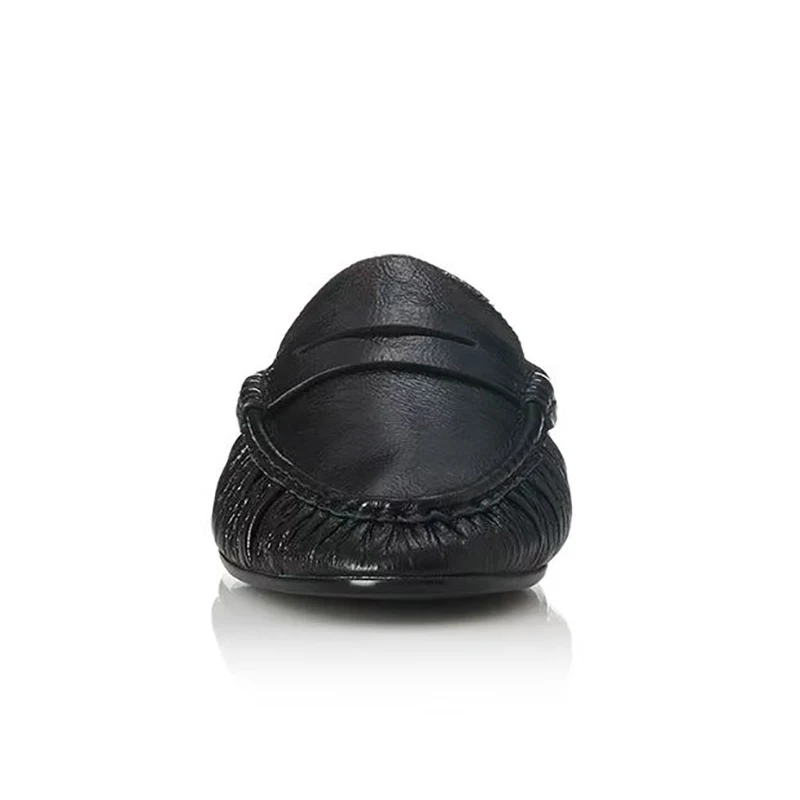
IX. Heel and Sole Maintenance
The structural elements of leather loafers require specific attention to maintain both appearance and function. Recognizing early signs of wear prevents costly damage and extends the life of your footwear.
Early warning signs of heel wear include:
– Uneven wear patterns developing on the heel cap
– Clicking sounds when walking on hard surfaces
– Visible compression or thinning of heel material
– Slight tilting or instability when the shoes are placed on flat surfaces
Heel caps should be replaced when wear becomes noticeable but before it reaches the heel body. This preventative approach typically costs significantly less than repairing damage to the actual heel structure. For maximum durability, consider replacing original heel caps with higher-quality materials like rubber or resin composites.
Protect soles from excessive wear by:
– Adding thin rubber sole protectors to leather soles
– Walking mindfully to avoid dragging or scuffing
– Rotating between multiple pairs of shoes to allow recovery time
– Keeping leather soles dry whenever possible
Finding a skilled cobbler represents one of the most valuable resources for loafer maintenance. Quality repair services might seem expensive initially but typically cost far less than replacing premium footwear. For specific maintenance needs, women’s square heel loafers may require particular attention to the distinctive heel shape to maintain their architectural appeal.
X. Strategic Storage Practices
Proper storage significantly impacts the lifespan and appearance of leather heeled loafers, making these practices just as important as active care routines.
Optimal storage conditions include:
– Cool, dry environments away from direct sunlight
– Moderate humidity (40-60%) to prevent leather drying or mold growth
– Adequate air circulation to prevent mustiness
– Protection from extreme temperature fluctuations
Shoe trees provide essential structure benefits:
– Cedar varieties absorb moisture and naturally deodorize
– Spring-loaded designs maintain shape without stretching
– Insert while shoes are fresh to preserve original dimensions
– Leave in place during storage, especially for extended periods
When storing for longer periods:
– Clean and condition thoroughly before storage
– Use dust bags to prevent environmental debris accumulation
– Store in original boxes if available for additional protection
– Place acid-free tissue inside to maintain shape if shoe trees aren’t available
Proper storage arrangements preserve the inherent quality of classic leather loafers as a timeless essential, ensuring they remain ready to wear and visually appealing regardless of how frequently you use them.
XI. Weather Considerations and Seasonal Wear
Different weather conditions present unique challenges for leather heeled loafers, requiring adaptive care and occasional strategic substitutions.
For rainy conditions:
– Apply waterproofing spray before the wet season begins
– Carry loafers in a bag and change into them upon arrival if heavy rain is expected
– Insert newspaper or paper towels to absorb moisture if shoes become wet
– Allow 24-48 hours of drying time with shoe trees inserted after exposure
In winter environments:
– Treat leather with protective conditioner before exposure to cold
– Clean promptly after contact with salt or snow using a diluted vinegar solution
– Consider rubber overshoes for extreme conditions
– Use dedicated winter footwear when conditions would damage fine leather
Summer heat requires:
– More frequent interior cleaning to manage perspiration
– Rotation between multiple pairs to allow adequate drying
– Anti-bacterial sprays to prevent odor development
– Moisture-absorbing insoles during particularly hot weather
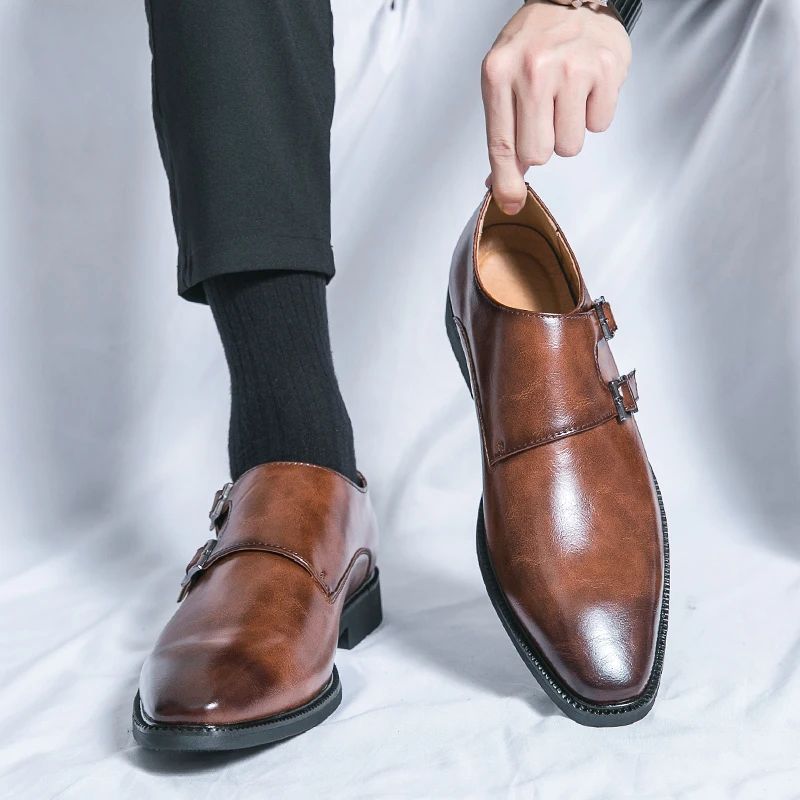
XII. Are Leather Heeled Loafers Right for Your Lifestyle?
While leather heeled loafers offer remarkable versatility, their suitability depends on your specific lifestyle factors and personal preferences.
For careers requiring significant walking or standing:
– Look for enhanced cushioning and arch support
– Consider lower heel heights (under 2 inches) for all-day comfort
– Prioritize wider heels that distribute weight more effectively
– Expect a longer breaking-in period to achieve optimal comfort
Office environments generally complement loafer wear perfectly, though consideration of office culture and dress codes remains important. More conservative workplaces may favor traditional penny loafer styles, while creative industries welcome more distinctive variations.
Individual foot characteristics significantly impact comfort. Those with specific foot concerns like plantar fasciitis or bunions should select loafers with ample toe boxes and supportive footbeds, potentially adding specialized inserts for customized support.
For individuals who regularly walk long distances, understanding the features of ideal walking loafers helps identify styles that balance fashion with practical comfort for active lifestyles.
XIII. The Environmental Impact of Leather Footwear
The production of leather footwear carries environmental considerations worth understanding as a conscious consumer. Traditional leather tanning involves significant water usage and sometimes problematic chemicals, though modern sustainable practices are increasingly available.
Quality leather loafers actually represent an environmentally responsible choice when:
– They’re constructed for longevity rather than fast fashion cycles
– Regular care extends their usable lifespan for years or even decades
– Repairs are utilized instead of replacement
– They’re sourced from manufacturers using responsible production methods
Look for indications of environmentally conscious production like vegetable tanning processes, water recycling systems, and ethical supply chain certifications. These practices significantly reduce the ecological footprint of leather production without compromising quality or durability.
Conclusion
Leather heeled loafers represent that rare fusion of style, comfort, and longevity that makes them a truly worthwhile wardrobe investment. With proper attention to fit, thoughtful breaking-in, and consistent care practices, these versatile shoes reward their owners with years of comfortable, stylish wear across countless occasions.
The knowledge shared throughout this guide empowers you to select, wear, and maintain leather heeled loafers with confidence and expertise. From professional settings to casual weekends to special occasions, these adaptable shoes stand ready to elevate your style while providing the practical comfort essential for today’s active lifestyles.
By approaching leather heeled loafers with this comprehensive understanding, you transform them from simple accessories into enduring wardrobe foundations that support both your style aspirations and daily comfort needs.

